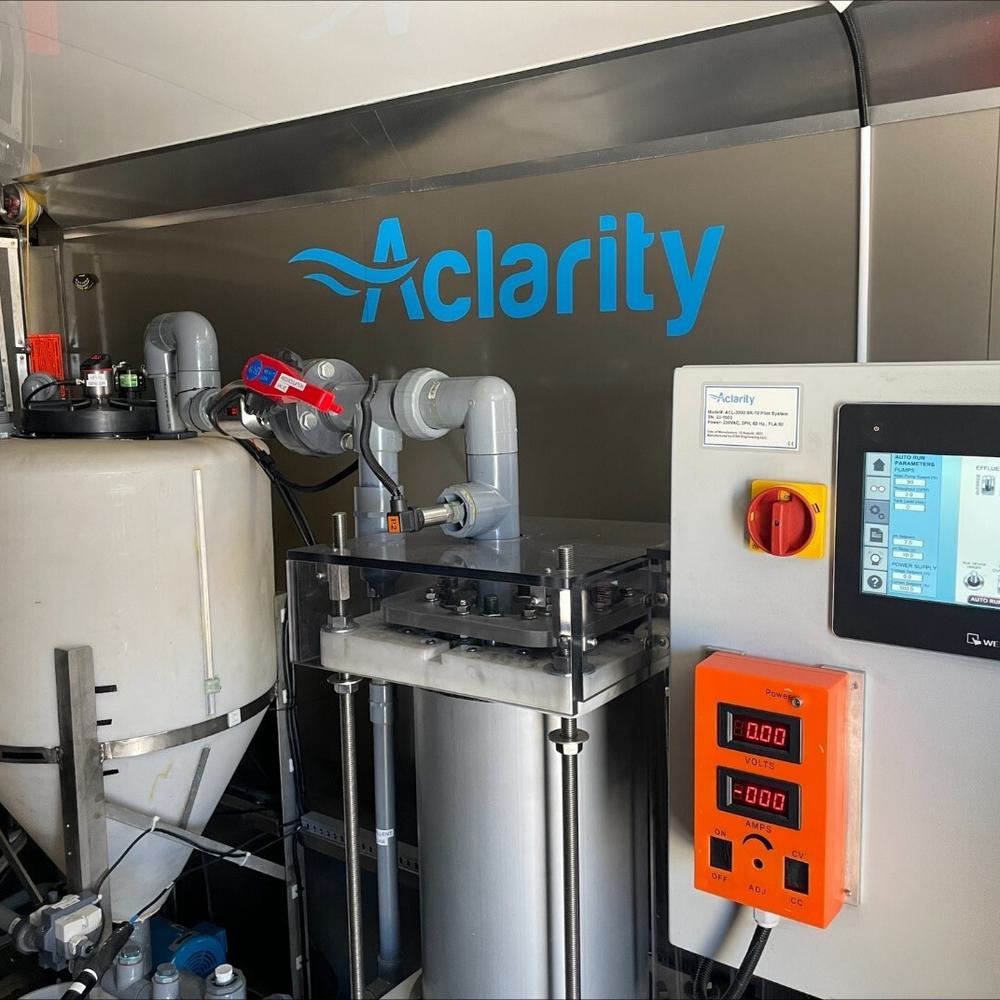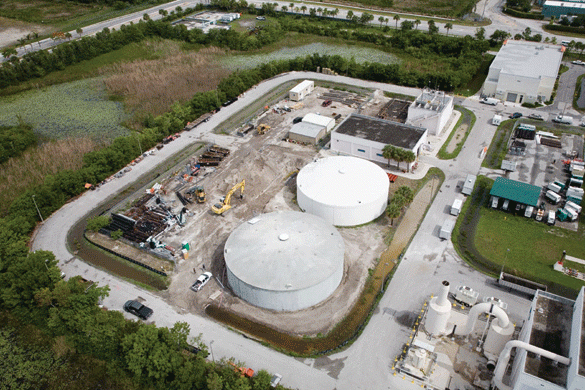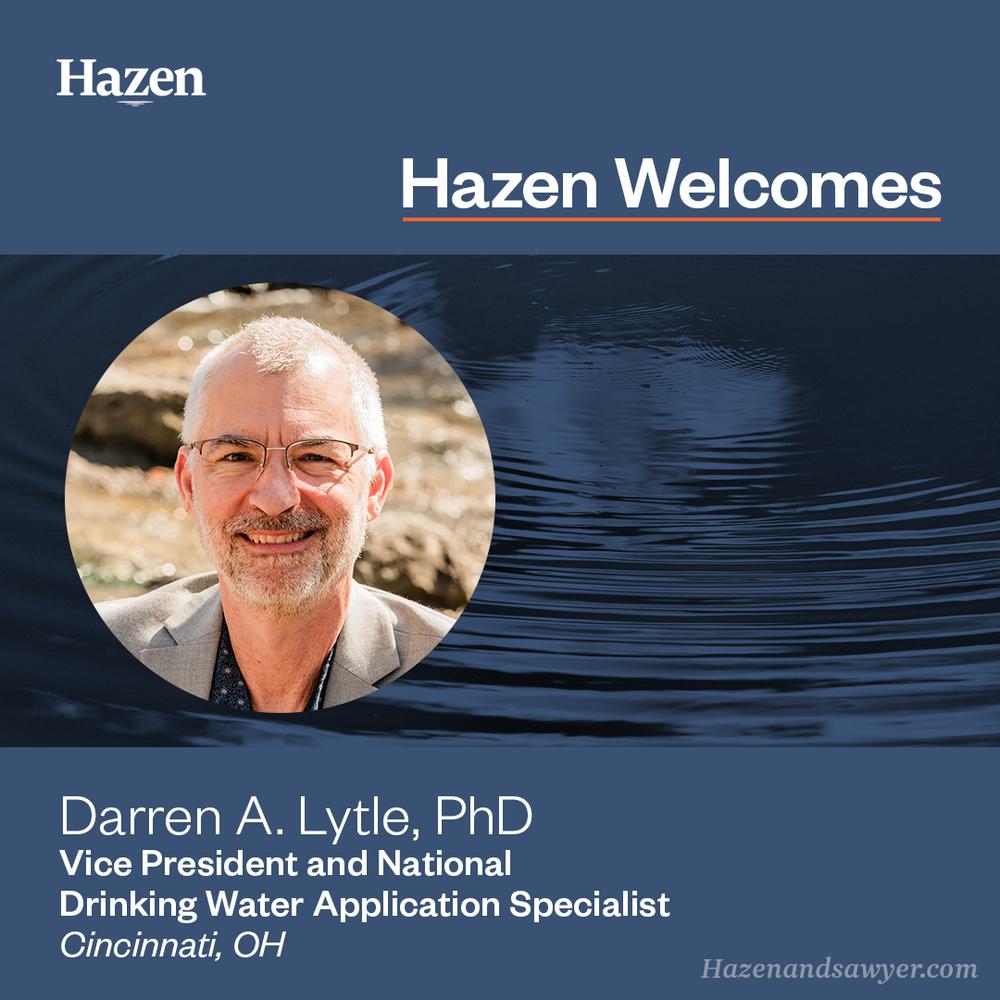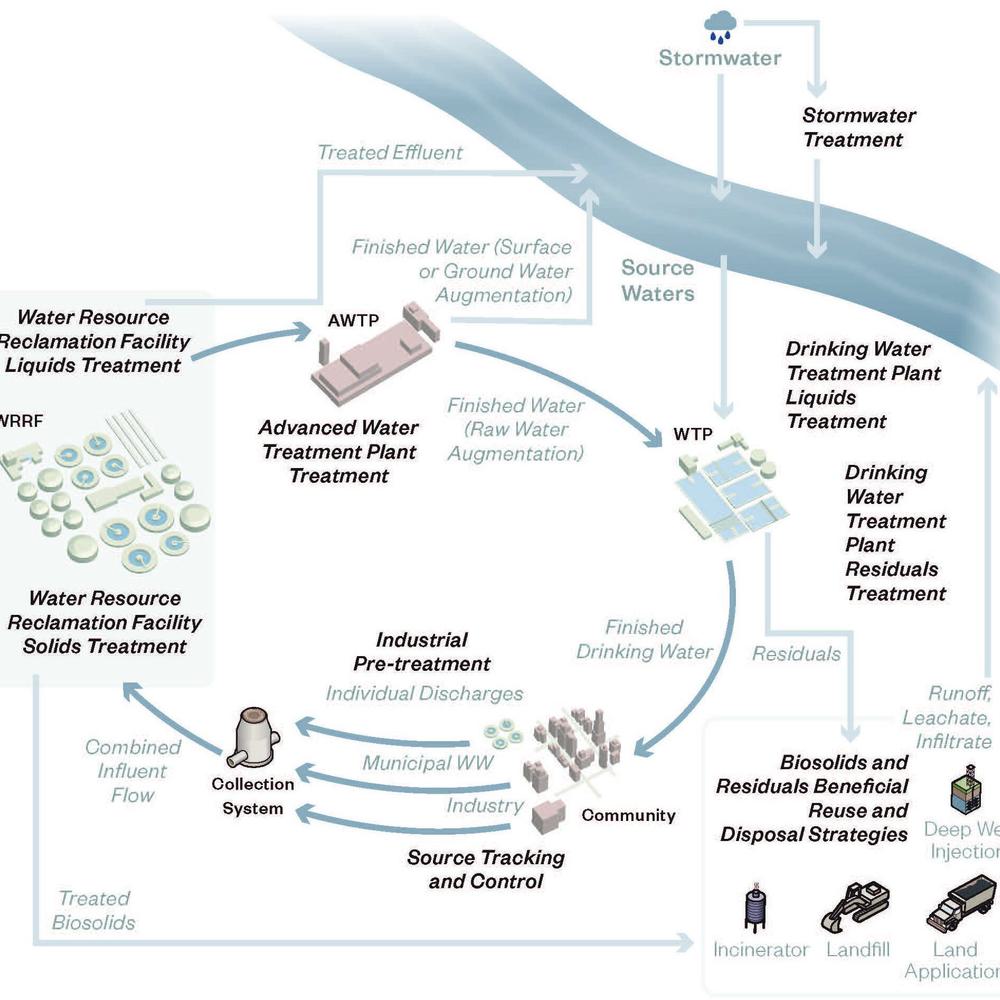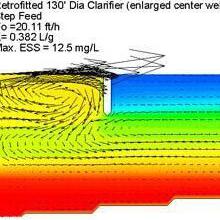Nitrogen Removal Pilot: Broward County North Regional WWTP
The goal of this pilot program was to assess cost-effective process modifications that would achieve the necessary reduction in nutrient loadings. Broward County contracted Hazen and Sawyer to develop the pilot program, conduct the testing, and provide recommendations for future process optimization.
On July 1, 2008, the State of Florida placed into effect new rules requiring publicly-owned treatment works to implement advanced wastewater treatment and/or management practices which will reduce nutrient mass loadings to the ocean. In anticipation of the required nutrient reduction, Broward County undertook a pilot program to evaluate the ability of the North Regional Wastewater Treatment Plant to operate in a nitrification/denitrification mode.
The pilot program consisted of a full-scale study in one of the two 20-mgd AADF fine bubble aeration modules (Module C). Module C consists of four parallel basins and each basin is composed of three stages. The stages are not physically isolated from each other, but each has its own bank of fine bubble diffusers.
The process modifications included operating the first stage of two of the basins with the diffusers off in order to create anoxic conditions (17% anoxic). The anoxic zone created consumed one third of that basin volume.

Paul Pitt is a leading expert in wastewater treatment plant design and operation and serves as Hazen’s Director of Wastewater Technology.
Related Topics:
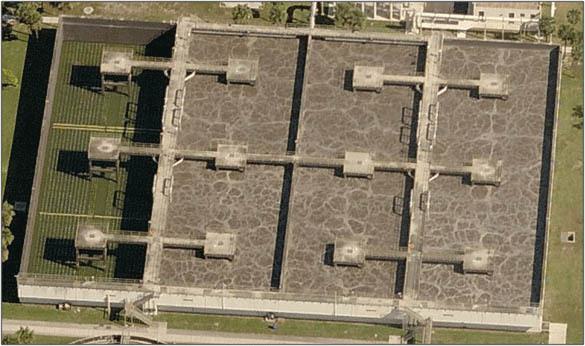
Once it was demonstrated that the two basins were achieving nitrification/ denitrification, the two remaining basins had their Stage 1 diffusers turned off to create an anoxic zone at the front (33% anoxic). Air was pulsed periodically to the first stage to keep the MLSS in suspension. RAS flows were supposed to be maximized to approximately 20 mgd during the course of the pilot study, but limitations in the system kept the maximum RAS flow to approximately 8.4 mgd.
Pilot testing started in February 2008 and continued for six months until July 2008. During the first testing phase, where Module C had two anoxic trains, target flows were kept at 15 mgd. When all the basins were switched to have anoxic zones, the 15 mgd target flow rate was maintained for six weeks. Significant nitrification was achieved during both test phases when aerobic SRT values of 4 to 6 days were maintained. After testing at a target flow of 15 mgd, the flows were gradually increased to test the nutrient removal process during stressed conditions.

The data gathered during the pilot study were used to develop and calibrate a BioWin model of Module C. This model was then used to evaluate and optimize future nutrient reduction strategies; including installing a baffle to isolate the anoxic zone, increasing the RAS rate, and installing an internal nitrified recycle (NRCY) flow.
A dynamic simulation was used to calibrate the model. Adjusting the influent fractionation and specific kinetic parameters, the model was calibrated to accurately predict the Broward County NRWWTP solids inventory and effluent quality observed during the pilot program.
The calibrated BioWin model was then applied to simulate the effects that selected physical modifications and additional operational changes would have on the nutrient reduction capabilities of the plant. The modeled scenarios are as follows:
- Module C operates with an unbaffled anoxic zone (base case)
- Module C operates with a dedicated anoxic zone (add baffle)
- Module C operates with a dedicated anoxic zone and a 100%, 200% and 300% nitrified recycle (NRCY) flow rate
- Module C operates with a dedicated anoxic zone and a 100% RAS recycle (20 mgd)
The pilot study yielded the following results, with no capital investment:
- Significant nitrification was achieved when aerobic solids retention valves (SRT) of four to six days.
- Effluent TN could be reduced from a daily average of 45 mg/L to 10-12 mg/L.
- Effluent TP could be reduced to approximately 2 mg/L.
Minor modifications to the module such as increasing the RAS flow will reduce the effluent TN by approximately 1-2 mg/L over piloted results. Furthermore, incorporating a 300-percent NRCY flow rate and a baffle to isolate the anoxic zone, should further reduce effluent TN quality to 7 to 10 mg/L. Thus, the County has multiple, flexible options for achieving the required nutrient mass reductions.
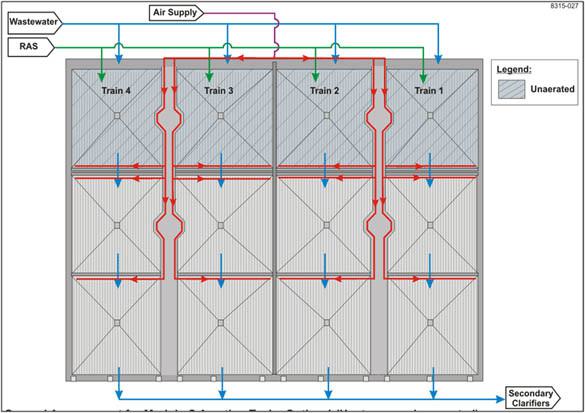
Project Outcomes and Benefits
- Determined how much nutrient removal can be achieved with only minor operational changes to an aeration basin that already nitrifies.
- Determined with a BioWin model what modifications can be made to Module C to achieve significant nutrient removal prior to 2018, so that the BCNRWWTP did not have to meet the 5,5,3,1 rule by that year.


